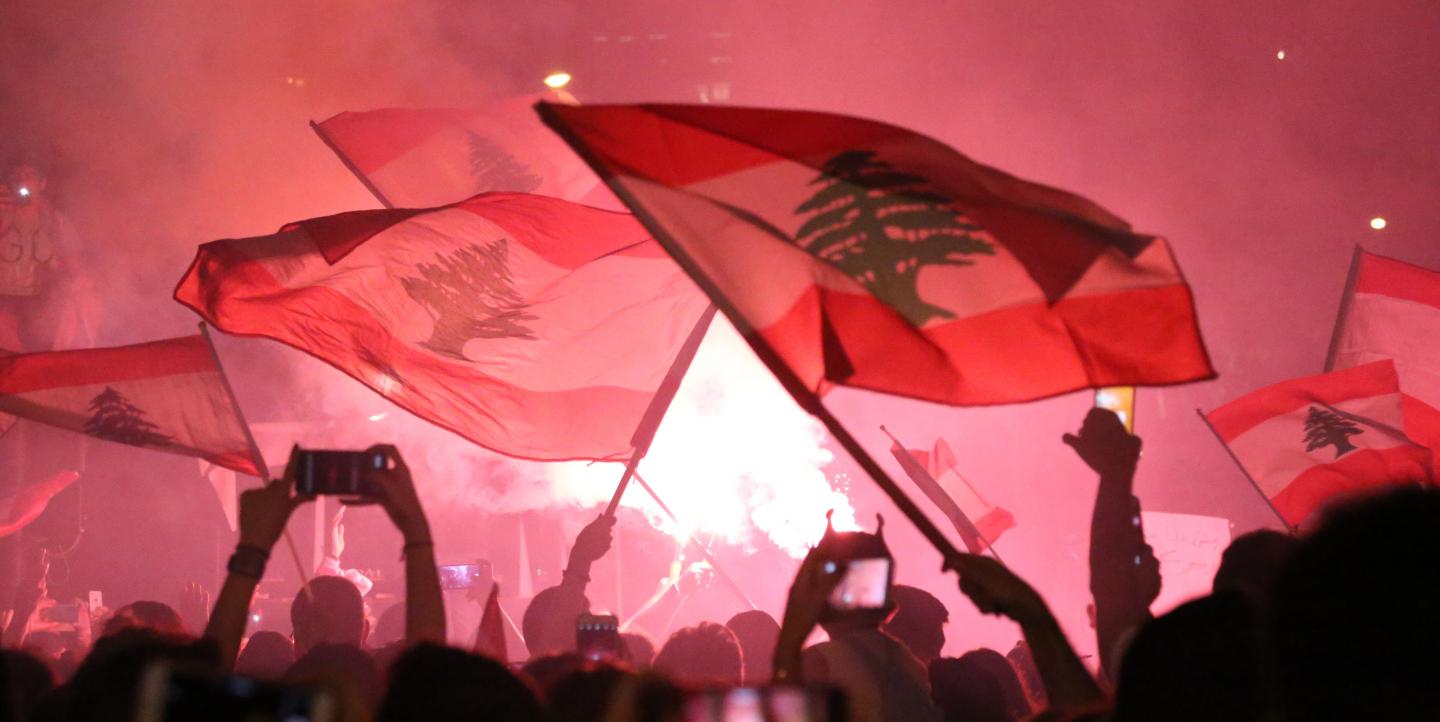The crackdown on press freedom in the Middle East isn’t new — and it has only intensified during the COVID-19 pandemic and following the recent wave of protests that took place two years ago in the region.
“I think it’s safe to say that press freedom has only worsened post-2019 protests,” said Kareem Chehayeb, an independent journalist in Lebanon. In 2020, “journalists in Iraq were killed in a gunman attack and a number of arrests took place in Egypt where security forces raided Haisam Hasan Mahgoub’s home [a correspondent for the Egyptian daily Al Masry Al Youm], and arrested him for terror charges,” he continued. “The editor-in-chief of Mada Masr, Lina Atallah, was arrested for reporting on the detained Egyptian activist Alaa Abdelfattah.”
In the face of such press freedom challenges, media workers have developed new narratives, and fueled a rise in citizen journalism. Here are just a few examples of how journalism has evolved in the Middle East.
[Read more: Journalism in Yemen and Jordan innovates amid instability]
The economic struggle
Working as a journalist today is challenging all over the world. In Lebanon, media workers are also navigating an ongoing economic crisis, which intensified after the local currency plummeted in 2019, and in the aftermath of the 2020 Beirut port explosion.
Reporters working for local outlets in the country have been receiving only portions of their salaries, according to said Sobhiya Najjar, an LBCI news anchor and producer at BBC Arabic. “They experienced tremendous pressure as they covered daily politics, economy, and COVID-related issues,” she said. Journalists have had little room, as well, to utilize different mediums and formats, such as investigative reporting, which require more resources and time, she explained.
The pressures they face are especially pronounced when it comes to investigative reporting. “When local media attempts to produce investigative reports, they are more likely to be questioned by Lebanese authorities as to why these reports are created, unlike when an international media outlet is doing it,” Najjar said. “Press freedom in Lebanon is in danger and lacks protections, and journalists could be easily taken to court.”
Citizen journalism
Alternative media began to emerge more in Lebanon over the past two years, driven primarily by citizens who have been disappointed in the reporting produced by traditional local news outlets, according to Najjar. The majority of registered news platforms in the country, too, are owned by political and corporate families, Chehayeb added.
“At the same time, you have a new wave of journalists and media workers that are not part of this cohort and are ultimately not part of the press syndicate,” Chehayeb said. “Some brilliant and honest journalists have taken significant risks to pull off some damning reports, but they have certain editorial lines they can’t cross that differ from channel to channel. Many are loyal to the state or elements of the state — for example, they would support the uprising, but they would mute the microphone if a protester insults the army.”
While some local journalists produce subjective news narratives that serve certain political parties, others are more focused on covering the unrest in Lebanon. Akhbar Al Saha and Megaphone are examples of alternative media outlets that focus on citizen journalism, as they cover issues of importance to the public, such as the protests. The outlets regularly post news videos on social media, reporting stories on issues like the poor vaccination efforts in the country, government corruption, and protests on the streets of Lebanon.
[Read more: The media in Lebanon: One year after the Beirut blast]
Shared knowledge and a pivot to multimedia reporting
Some Lebanese outlets have turned to podcasts about the revolution, urging citizens to discuss specific topics around the actions of the current regime and the government’s attempts to censor journalists, said Najjar.
There has also been a surge in demand for video explainers. Local viewers are fond of this format, because it provides facts, data and analysis in a simplified way, according to Chehayeb. “The uprising and economic crisis have definitely pushed people into wanting to learn more about the ins and outs of the country, but without the political jargon,” he said.
Sherif Mansour, the coordinator at CPJ’s Middle East and North Africa program, echoed Chehayeb’s note on the popularity of visual journalism practices — and not just in Lebanon, but across the region, and its role in helping people understand the elements of the protests. “The use of visuals in covering the latest protests in the region has shed light on the role of women in the uprisings as photos of women in Sudan and Lebanon rallying protesters and leading marches went viral,” he said.
Importantly, local journalists in the region are communicating more with each other despite their different approaches to journalism, Mansour explained, adding that technology is also enabling them to work around government control.
“Journalists and independent media in the region are learning from each other and also defending each other a lot more across borders than within borders,” he said. “You will find a lot more solidarity across the borders, and that is what I think the lesson is from all those protests that happened back to back in a very short period.”
Photo by Charbel Karam on Unsplash.


